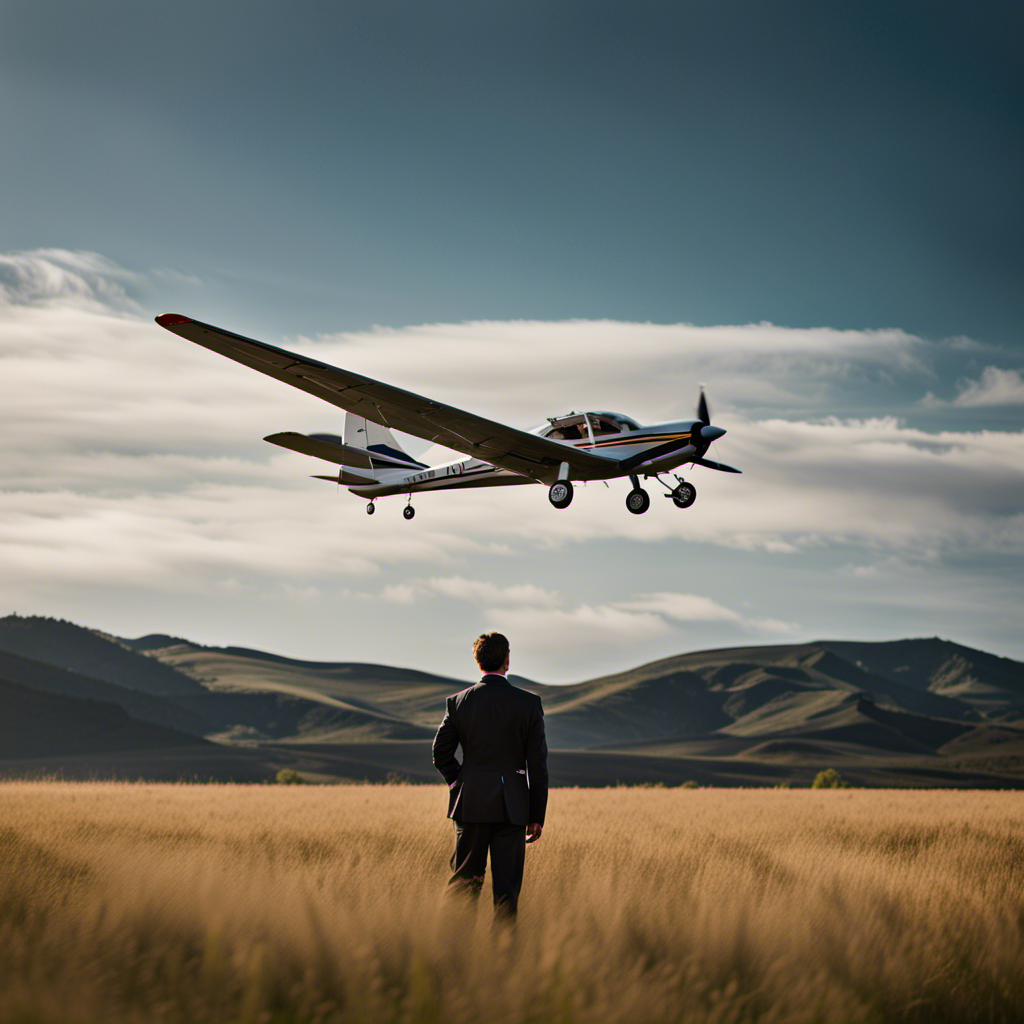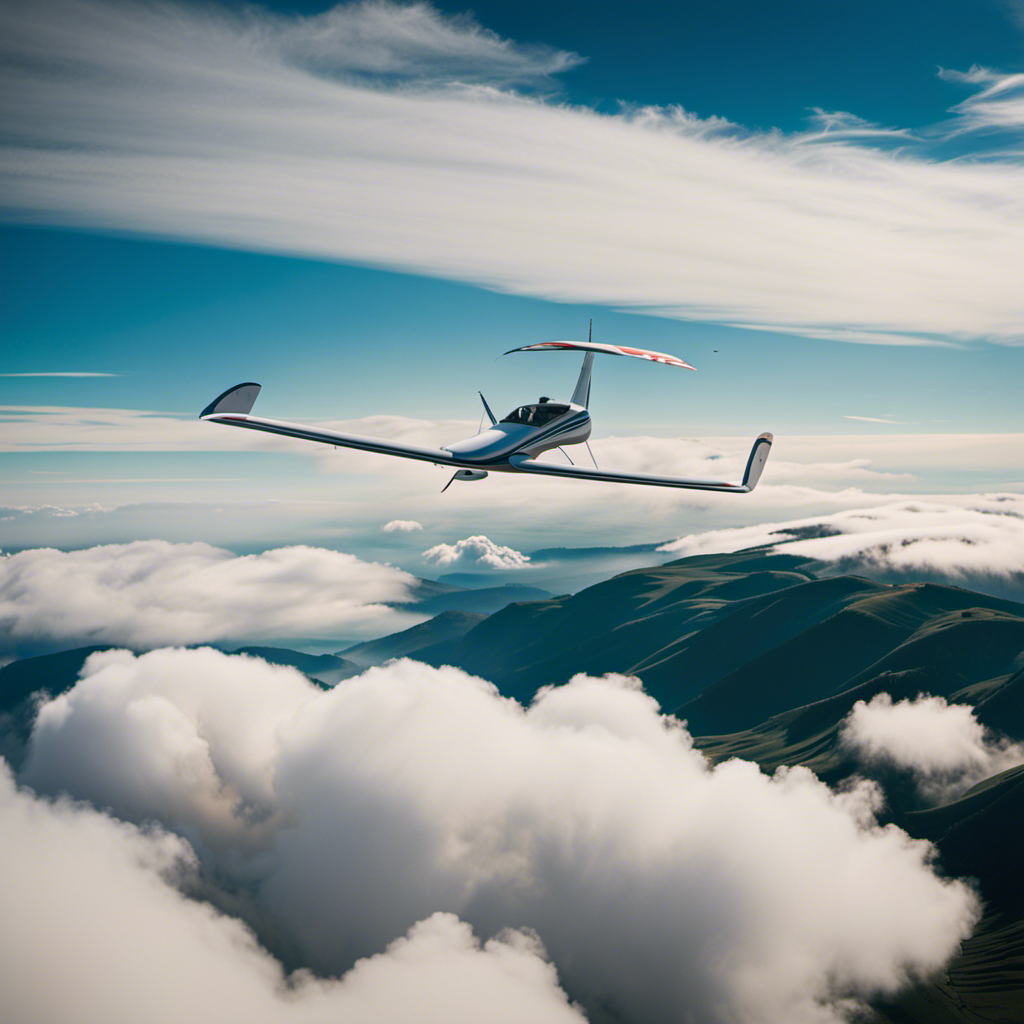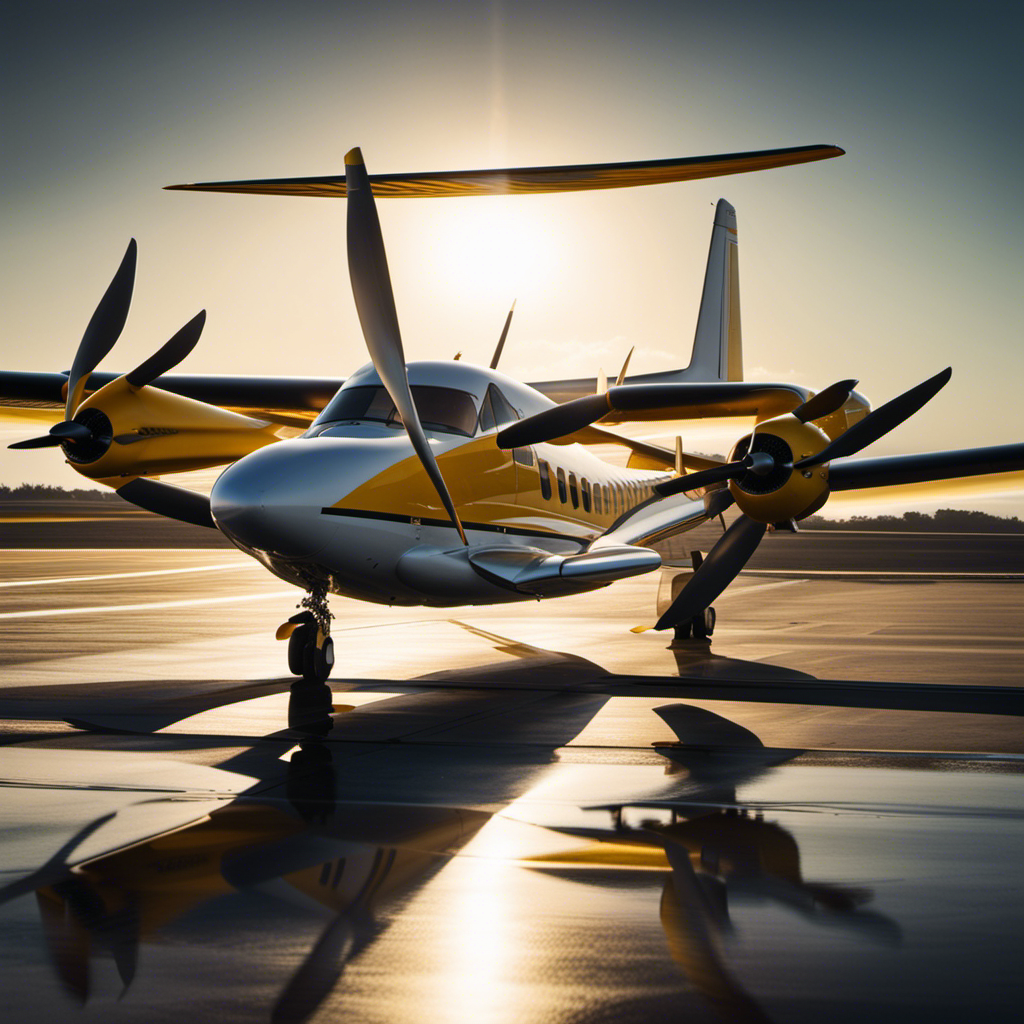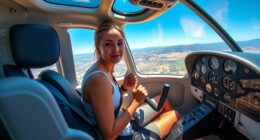Are you ready to take flight and soar through the skies?
Embarking on the journey to obtain your gliding license can be a thrilling and rewarding experience.
This step-by-step guide will lead you through each phase of the process, providing you with the knowledge and expertise you need to navigate the world of gliding with confidence.
From determining your eligibility to applying for your license, we’ll be your trusted companion on this exhilarating adventure.
So, strap in, spread your wings, and let’s soar together.
Key Takeaways
- Thoroughly review the gliding manual and study specific chapters and sections highlighted in the exam syllabus
- Familiarize yourself with regulations governing glider operations, airspace restrictions, and emergency procedures
- Practice answering sample exam questions to prepare for the written exam
- Gather all necessary forms and supporting documents to complete the gliding license application accurately and thoroughly
Determine Eligibility and Requirements
To determine if you’re eligible to apply for a gliding license, you’ll need to review the requirements.
The first requirement is age. In most countries, you must be at least 16 years old to apply for a gliding license.
Additionally, you’ll need to undergo a medical examination to ensure you are fit to fly. This examination will include a physical assessment and an eye test.
Furthermore, you’ll need to complete a certain number of flight hours as a student pilot, typically around 40 to 50 hours. During this time, you’ll learn the fundamentals of gliding and gain the necessary skills and knowledge to pass the license examination.
Once you meet these requirements, you’ll be ready to find a gliding school and begin your training.
Find a Gliding School
When it comes to finding a gliding school in your area, it’s important to do your research.
Start by considering the reputation of the school – look for reviews and testimonials from previous students.
Next, make sure to consider the qualifications of the instructors – look for certifications and experience in the field.
Finally, take a close look at the facilities offered by the school – ensure that they have the necessary equipment and resources for a successful gliding experience.
Research gliding schools in your area
Start by researching gliding schools in your area to find one that suits your needs and preferences. This is an important step in your journey towards obtaining a gliding license.
Here are three key things to consider when researching gliding schools:
-
Location: Look for a school that is conveniently located for you. Consider the distance you’re willing to travel and the weather conditions in that area.
-
Instructor qualifications: It’s essential to have skilled and experienced instructors who can guide you through the learning process. Look for schools that have certified instructors with a good track record.
-
Facilities: Check the facilities offered by the schools. Are they well-maintained and equipped with the necessary gliders and safety equipment? Consider the availability of hangars, briefing rooms, and other amenities.
Once you have gathered all the necessary information about the gliding schools in your area, you can move on to the next section, where we will discuss the importance of considering reputation, instructor qualifications, and facilities.
Consider reputation, instructor qualifications, and facilities
Once you’ve gathered information on the gliding schools in your area, take into account their reputation, the qualifications of their instructors, and the quality of their facilities. Choosing the right gliding school is crucial to your success in obtaining a gliding license. To assist you in making an informed decision, consider the following factors:
| Reputation | Instructor Qualifications | Facilities |
|---|---|---|
| Look for schools with a strong reputation within the gliding community. Find out how long they have been in operation and if they have any notable achievements or awards. | Ensure that the instructors are highly qualified and experienced. Check if they hold any certifications or have a track record of successful student outcomes. | Evaluate the quality of the facilities, including the condition of the gliders, maintenance practices, and the availability of necessary equipment. |
Enroll in a Training Program
To enroll in a training program, you’ll need to find a reputable flight school that offers gliding lessons. This is an important step in your journey to obtaining a gliding license. When searching for a flight school, consider factors such as their reputation, instructor qualifications, and facilities.
Look for schools that have experienced instructors who are knowledgeable about gliding and have a good track record of producing successful glider pilots. Additionally, ensure that the school has well-maintained gliders and a safe training environment.
Once you have found a suitable flight school, you can begin your training by completing ground school. This will cover the theoretical aspects of gliding, including aerodynamics, meteorology, and navigation. Ground school training is a crucial foundation for your practical flying lessons.
Complete Ground School Training
Before beginning your practical flying lessons, it’s essential to complete ground school training, which covers the theoretical aspects of gliding. This training is designed to provide you with a solid foundation of knowledge and understanding before you take to the skies. During ground school, you will learn about aerodynamics, meteorology, aircraft systems, navigation, and regulations. It will also give you an opportunity to familiarize yourself with the necessary equipment and safety procedures.
In ground school, you will benefit from interactive lectures delivered by experienced instructors and hands-on activities and simulations to reinforce your learning.
By completing ground school training, you will have a solid understanding of the key concepts and principles that will guide you throughout your gliding journey. Armed with this knowledge, you will be well-prepared to start practical training and put your skills to the test in the air.
Let’s now move on to the exciting part – starting your practical flying lessons.
Start Practical Training
Now that you’ve completed ground school training, it’s time to get hands-on experience and start your practical flying lessons. This is where you truly begin to feel the thrill of flying and put all your theoretical knowledge into practice.
Practical training is an essential part of obtaining your gliding license, as it allows you to develop your flying skills and gain confidence in the cockpit. During this phase, you will learn how to perform pre-flight checks, takeoff, land, and maneuver the glider. Your instructor will guide you through each step, providing valuable feedback and guidance to help you improve.
Gain Experience and Flight Hours
During practical training, you’ll have the opportunity to gain valuable flight hours and experience in the cockpit. This phase of your gliding license process is crucial as it allows you to put your theoretical knowledge into practice and develop your flying skills.
Under the guidance of experienced instructors, you will learn how to handle the glider, perform various maneuvers, and navigate different weather conditions. As you accumulate flight hours, you will become more confident and proficient in controlling the aircraft.
The hands-on experience gained during practical training is invaluable and will prepare you for the challenges that lie ahead. Once you have gained sufficient flight hours, it’s time to prepare for the written exam, where you will demonstrate your knowledge of gliding principles and regulations.
Prepare for the Written Exam
To prepare for the written exam, you should review the gliding principles and regulations that will be covered. This is an essential step in your journey to obtaining a gliding license. The exam will test your knowledge on a range of topics, including aerodynamics, meteorology, navigation, and flight safety.
Study the gliding manual thoroughly, paying close attention to the specific chapters and sections highlighted in the exam syllabus. Familiarize yourself with the various regulations governing glider operations, airspace restrictions, and emergency procedures. Additionally, practice answering sample exam questions to assess your understanding and identify areas that require further study.
By dedicating time and effort to preparing for the written exam, you will be one step closer to achieving your goal of becoming a licensed glider pilot.
Now, let’s discuss how to pass the flight test, the next crucial milestone in your gliding journey.
Pass the Flight Test
Before taking the flight test, you’ll need to demonstrate your proficiency in various flight maneuvers and emergency procedures. This test is designed to assess your skills and ensure that you are capable of safely operating a glider. During the test, an examiner will evaluate your ability to perform tasks such as takeoffs and landings, steep turns, stalls, and emergency procedures. It is crucial to be well-prepared and confident in your abilities. To give you an idea of what to expect, here is a breakdown of the flight test components:
| Flight Maneuvers | Emergency Procedures |
|---|---|
| Takeoffs and landings | Emergency landings |
| Steep turns | Spin recovery |
| Stalls | – |
| – | – |
Once you have successfully completed the flight test, you can proceed to apply for the gliding license. This next step will involve submitting your application and fulfilling any additional requirements set forth by the governing aviation authority.
Apply for the Gliding License
Once you’ve successfully passed the flight test, it’s time to submit your application for the gliding license. This is an exciting step towards becoming a licensed glider pilot. To ensure a smooth process, follow these steps:
-
Complete the application form: Obtain the necessary forms from your local aviation authority or gliding club. Fill out the required information accurately and thoroughly.
-
Gather supporting documents: Attach any required documents, such as your flight test certificate, medical certificate, and proof of glider ownership or rental agreement.
-
Pay the application fee: Check the fee amount and payment methods specified in the application instructions. Submit the payment along with your application.
-
Submit the application: Once you have completed all the necessary steps, submit your application package to the designated authority or club.
Continue Learning and Improving
As you continue on your journey to becoming a licensed glider pilot, it’s important to find opportunities for ongoing learning and improvement. Building on your skills and knowledge will not only make you a better pilot, but also increase your safety and confidence in the cockpit. One way to do this is by seeking out additional training and education. Consider taking advanced courses or attending workshops that focus on specific areas of gliding, such as navigation techniques or meteorology. Additionally, don’t underestimate the value of learning from experienced pilots. Engage in discussions with fellow pilots, join gliding clubs, and participate in mentoring programs. By continually learning and improving, you will become a more skilled and competent glider pilot.
| Opportunities for Learning and Improvement |
|---|
| – Advanced courses |
| – Workshops |
| – Discussions with experienced pilots |
| – Gliding clubs |
Conclusion
Congratulations! You’ve successfully navigated the gliding license process. You’re now ready to soar to new heights. By following the step-by-step guide, you’ve gained the necessary knowledge and skills to become a licensed glider pilot.
Your dedication and hard work have paid off, allowing you to embark on a journey filled with endless possibilities and breathtaking experiences. So spread your wings, embrace the wind beneath you, and continue your pursuit of learning and improving in the world of gliding.
The sky is calling, and you’re now equipped to answer its euphoric embrace.









